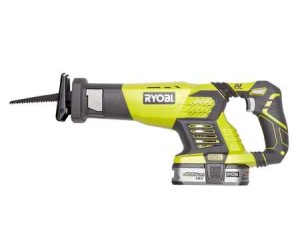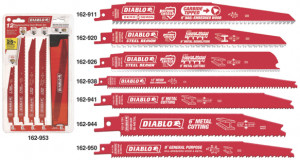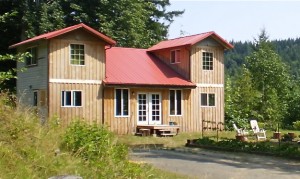by Nick Romaniello -
On December 26th the snow was falling fast and heavy here in Pittsburgh. I opened the curtain and saw a vehicle stuck a few houses down on my steep front road. It’s a spot where cars often get stuck in bad snow, I grabbed my shovel and salt bucket and went down to offer help. The older gentleman inside informed me that in addition to being stuck that he had a flat, and a tow truck may be hours away due to the weather. His Dodge Caravan had the spare mounted underneath the chassis held in place by a metal and plastic retainer and lowered by turning a nut inside the tailgate. The retainer was corroded into place and could not be lowered. I returned to the scene with my trusty cordless reciprocating saw. I slid under the stuck van and within moments had cut through the retainer allowing the spare tire to be removed. In no time the tire was installed, and with some shoveling and salt, the driver was on his way.
 I have a lot of tools, but in a disaster situation where I could only take one power tool it would likely be my cordless reciprocating saw. It is commonly called a “sawzall” (original trademarked name) because that’s exactly what it does. With the right blade it can hack its way through anything from metal to wood to plastics and even some masonry applications. Easier to handle and more versatile than a chainsaw and faster than handsaws, a sawzall is a good choice for emergency cutting. In construction it’s used most often in demolition and rough carpentry, but with its wide variety of blade choices the sawzall is able to step in and do the job of almost
I have a lot of tools, but in a disaster situation where I could only take one power tool it would likely be my cordless reciprocating saw. It is commonly called a “sawzall” (original trademarked name) because that’s exactly what it does. With the right blade it can hack its way through anything from metal to wood to plastics and even some masonry applications. Easier to handle and more versatile than a chainsaw and faster than handsaws, a sawzall is a good choice for emergency cutting. In construction it’s used most often in demolition and rough carpentry, but with its wide variety of blade choices the sawzall is able to step in and do the job of almost  any other saw in a pinch. A corded sawzall is more efficient for extensive work, but battery power will work where and when an outlet isn’t an option. Definitely choose lithium ion batteries over NiCad since sawzall’s are energy hungry. I will make a plug: the Ryobi One+ 18-Volt Cordless Reciprocating Saw (available at Home Depot for about $60 plus battery). I have one that, despite its hobbyist status in the tool hierarchy, has been in my professional tool kit for seven years. The One+ system has multiple tools that operate with the same interchangeable battery and is reasonably priced. A car charger is even available so that the batteries can be maintained on the road. Whichever brand or model you choose, make sure that you also purchase an assortment of blades, including a few “fire and rescue” blades which cut aggressively through a variety of materials.
any other saw in a pinch. A corded sawzall is more efficient for extensive work, but battery power will work where and when an outlet isn’t an option. Definitely choose lithium ion batteries over NiCad since sawzall’s are energy hungry. I will make a plug: the Ryobi One+ 18-Volt Cordless Reciprocating Saw (available at Home Depot for about $60 plus battery). I have one that, despite its hobbyist status in the tool hierarchy, has been in my professional tool kit for seven years. The One+ system has multiple tools that operate with the same interchangeable battery and is reasonably priced. A car charger is even available so that the batteries can be maintained on the road. Whichever brand or model you choose, make sure that you also purchase an assortment of blades, including a few “fire and rescue” blades which cut aggressively through a variety of materials.
It is worth mentioning that this was actually the second time I had to perform this exact same procedure on a Dodge Caravan. The first I went out to rescue a friend who’s Caravan got a flat on the interstate in the heat of August with her infant daughter aboard and she was unable to lower her spare. Everyone, apparently Caravan owners especially, should take the time to locate their spare tire, familiarize themselves with how it is deployed, and make sure that everything related to changing the tire is actually in working order. Practice changing a tire in your driveway on a nice day so you don’t have to learn how on the side of a busy road in a snowstorm.
My cordless sawzall is the ‘go to’ tool for all-around cutting, from pruning trees to extracting someone from a wrecked car. Its seemingly limitless abilities should earn it a place in every prepper’s tool kit. But just like the spare tire, be sure to familiarize yourself with it’s operation before you need to put it into use.




